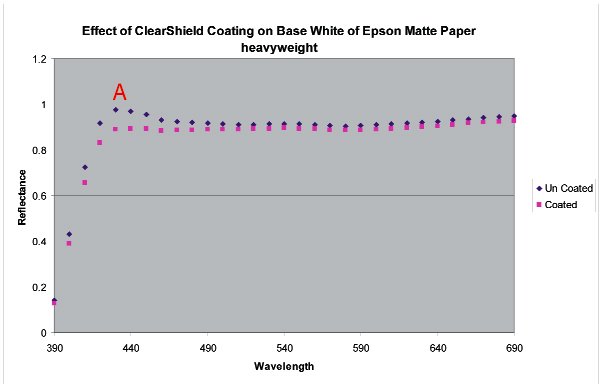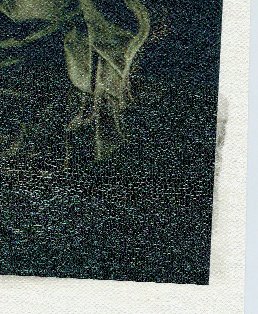articles/Paper/lavaartpaper-page4
Paper Chase - LANA edition d' Art Digital Paper - part 4 of 1 2 3 4 5
by Mike McNamee Published

The straightening of the response curve and the increase of its slope point to the reason for the increased contrast and depth of black in the ClearShield coated product. Across right, the improvement is even greater in Epson Matte paper in which the black is even deeper after coating. Values such as this are normally more typical of gloss and lustre papers.
Lab PlotyGenerally the flesh tones are rotated slightly towards more yellow with only a slight fall in saturation. All of the desaturated flesh tones (ie with very little colour) are held in the warm part of the Lab plot which is why they are pleasing to the eye.
RIGHT: The all important grey response of the paper printer combination.The grey linearity falls right into the lowest tone at 18% brightness.The grey colour bias plot shows most of the grey scale in the warm cream part of the Lab plot, probably one of the reasons why the flesh tones are so pleasing.
Colour
Although the Lana surfaces are relatively "soft" they hold detail well.
Under close inspection there are no residual lines left from the ink jet nozzles but bleed is well under control.

The straightening of the response curve and the increase of its slope point to the reason for the increased contrast and depth of black in the ClearShield coated product. Across right, the improvement is even greater in Epson Matte paper in which the black is even deeper after coating. Values such as this are normally more typical of gloss and lustre papers.
The flat areas of grey are particularly even.
Giclee Coating with ClearShield
ALUMAFRAME also import the liquid uv coating material called ClearShield. This is a water-based emulsion, which is milky in the bottle, but dries clear. It may be applied by spray, silkscreen, brush or roller and is self levelling. It is available in Gloss, Semi Matte and Matte Finishes. The surface of fine art and canvas materials can be delicate. This is not a problem if an image is to be framed but the protective nature of the coating is welcome in a lot of uses. Tests at the Wilhelm Institute also show that uv protective coating can prolong the fade resistance by as much as twice. The manufacturers of ClearShield are a little cautious and claim between nothing and 100% improvement.
One of the interesting changes was the cutting out of uv from the spectral power distribution (SPD) curve. The coating has uv protective properties and these are demonstrated by the slicing off of the uv "hump" in the SPD. Presumably this is why the coating also protects the underlying pigments against damage by ultra violet light.
For this initial examination we looked at the effect of the ClearShield on the colour values. This was quite marked. The black density was improved from 26.2 to 13.8% brightness value, a significant change. All the gamut errors were reduced but the error across the gamut in the lightness channel was dropped more than threefold (up to 5 in other areas, see the table). The contrast of the print was improved (see graph) and the colours were more saturated. There was no detectable change in the colour.
Please Note:
There is more than one page for this Article.
You are currently on page 4
- Paper Chase - LANA edition d' Art Digital Paper page 1
- Paper Chase - LANA edition d' Art Digital Paper page 2
- Paper Chase - LANA edition d' Art Digital Paper page 3
- Paper Chase - LANA edition d' Art Digital Paper page 4
- Paper Chase - LANA edition d' Art Digital Paper page 5
1st Published
last update 09/12/2022 14:55:39
More Paper Articles
There are 0 days to get ready for The Society of Photographers Convention and Trade Show at The Novotel London West, Hammersmith ...
which starts on Wednesday 15th January 2025




